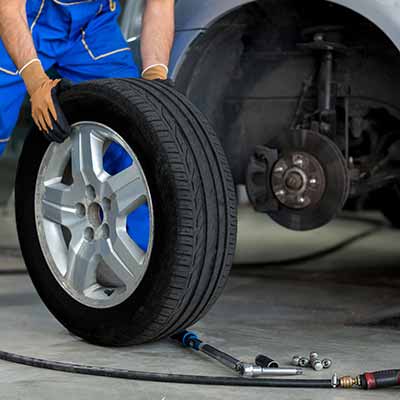Everything You Need to Know About Tyre Rotation

 In order to increase the performance and lifespan of your tyres, a regular rotation of the tyres is necessary. Think about this, your tyres are the only parts of your vehicle in contact with the ground, thus there is constant friction. The constant friction, in addition to the vehicle being driven in all weather conditions and different road surfaces, causes different effects on your tyre condition. Of course, there are more contributing factors and tyres have to be in tip-top condition at all times to ensure safety and performance. The proper rotation of your vehicle’s tyres plays a particularly important role in the overall performance of your car.
In order to increase the performance and lifespan of your tyres, a regular rotation of the tyres is necessary. Think about this, your tyres are the only parts of your vehicle in contact with the ground, thus there is constant friction. The constant friction, in addition to the vehicle being driven in all weather conditions and different road surfaces, causes different effects on your tyre condition. Of course, there are more contributing factors and tyres have to be in tip-top condition at all times to ensure safety and performance. The proper rotation of your vehicle’s tyres plays a particularly important role in the overall performance of your car.
Here are a few reasons as to why you may need to rotate them more often:
– Going on longer journeys, driving with a full boot or driving at higher speeds: By repeatedly doing these things, you will be adding strain to the wheels and this can wear the tread out more quickly. This may result in more frequent tyre rotations.
– Having uneven tread on your tyres: When checking your tyres, if you find that the tread on some are more worn than others, this may call for rotation, as an attempt to even out the wear.
– Hearing a humming noise from your vehicle: When you’re driving and you hear your vehicle humming, this may be a sign that your tyres need switching around.
To ensure the optimum performance of your vehicle, it is recommended that car tyre rotation must be done every 5000-6000 miles. If you are confident with your mechanic skills, rotating your tyres should not be an issue. For one, tyre rotation is not as complicated as you may think provided that you know how to use your tools and you have a plan on how you intend to rotate them.
Changing the position of your tyres evens its wear and tread patterns. When you rotate your tyres regularly, you’re ensuring you get the most wear out of them and you’ll save money in the long run.
What do I need to rotate my tyres?
You will need the following to rotate your tyres:
- a car jack;
- a stand;
- a wheel brace;
- a wheel locking nut key
How do I rotate my tyres?
- Ensure the parking brake is engaged.
- Loosen the wheel nuts on all the wheels, however, do not take them off completely. Loosening them will make unscrewing them easier once the wheel is elevated.
- With your car jack, lift one of the wheels and place the jack stand underneath it. To make the rotation task easier and faster, its best to have 2 jack stands. Fewer stands will require you to spend more time lowering and raising your car.
- Completely unscrew the nuts once the wheel has been raised and remove the tyres and rotate accordingly.
- Place the new wheel on the wheel hub and tighten the wheel nuts as much as you can, using your hands.
- Lower the car and with the wheel brace, tighten the nuts. It is recommended to work on the nuts diagonally (almost like a star pattern). Unevenly tightening them can cause harm on your brake rotor, so make sure this is done right.
- Note down the mileage and date of the rotation on your manual. Set the next rotation date once your vehicle has done another 5000-6000 miles and then add to the calendar.
Tyre rotation helps you get the most out of your tyres, as it even outs the wear and in turn improves the ride experience, giving you a more even and smooth ride. Some might have the time to do their own tyre rotation plan every year, but if you don’t, you can take your vehicle to your nearest automotive shop, who will be more than willing to do this service. Whilst having the tyres rotated, it’s best to get them balanced at the same time and if you feel your steering wheel is off-centre when you drive or pulls one-way, it may also be worth having the tracking and geometry checked.
Depending on the type of vehicle you have, it may require a 4-Wheel alignment to rectify any issues with off-centre steering or biased one-way. Once the rotation is done, you may ask for wheel balancing to ensure proper alignment. At Power Steering Services, we offer tyre rotation services, so book in today!
